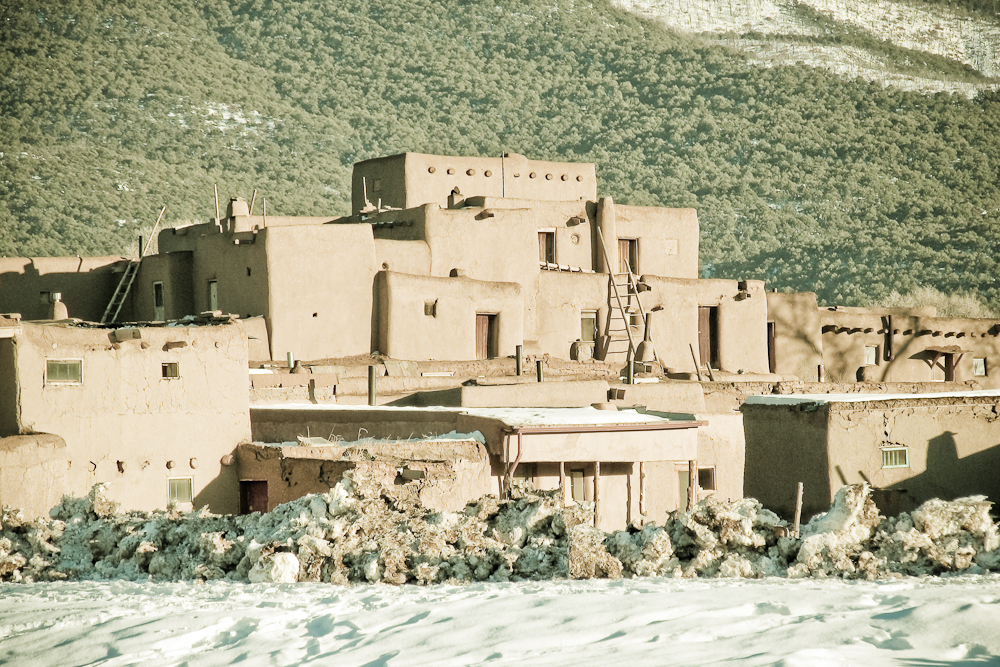

Taos Pueblo today stands as the largest surviving multistoried Pueblo structure in the United States. We have endured even after 400 years of Spanish and Anglo presence.
The crystal clear waters of the Rio Pueblo, which originate high in the mountains at our sacred Blue Lake, still serves as our primary source for drinking and irrigation. To visit our Pueblo is to experience the spirit and unique way of life that continues mush as it has for nearly ten centuries.
To visit our Pueblo is to experience the spirit and unique way of life that continues much as it has for nearly ten centuries. The artists of Taos Pueblo produce beautiful handcrafted wares using techniques passed down through generations.
Tanned buckskin moccasins and drums are characterized by simplicity and enduring quality. Sculpture, painting and jewelry are contemporary expressions of traditional art forms. We are known for micaceous clay pottery, which has been our utilitarian cookware through the ages.
Today, Taos Pueblo potters are challenged to produce high quality pottery by putting a high polish on vessels.
In 1960, Taos Pueblo was designated a National Historic Landmark; it was added to the National Register of Historic Places in 1966. In 1992, the Pueblo was admitted by the United Nations to the “World Heritage List,” due to its uniqueness and universal value to the heritage of all mankind.
When you visit Taos Pueblo, you will have an opportunity to learn about our history and culture, as well as to purchase fine arts and crafts. If you are fortunate to visit on a feast day, you will experience songs and dances that have transcended time and are passed down from generation to generation.
Dances are held throughout the year, and most are open to the public. While at Taos Pueblo, we ask that you be respectful; do not applaud or interfere with the dances in any way. Also, no cameras or recordings of any kind are allowed during these ceremonial dances.
Quoted from indianpueblo.org